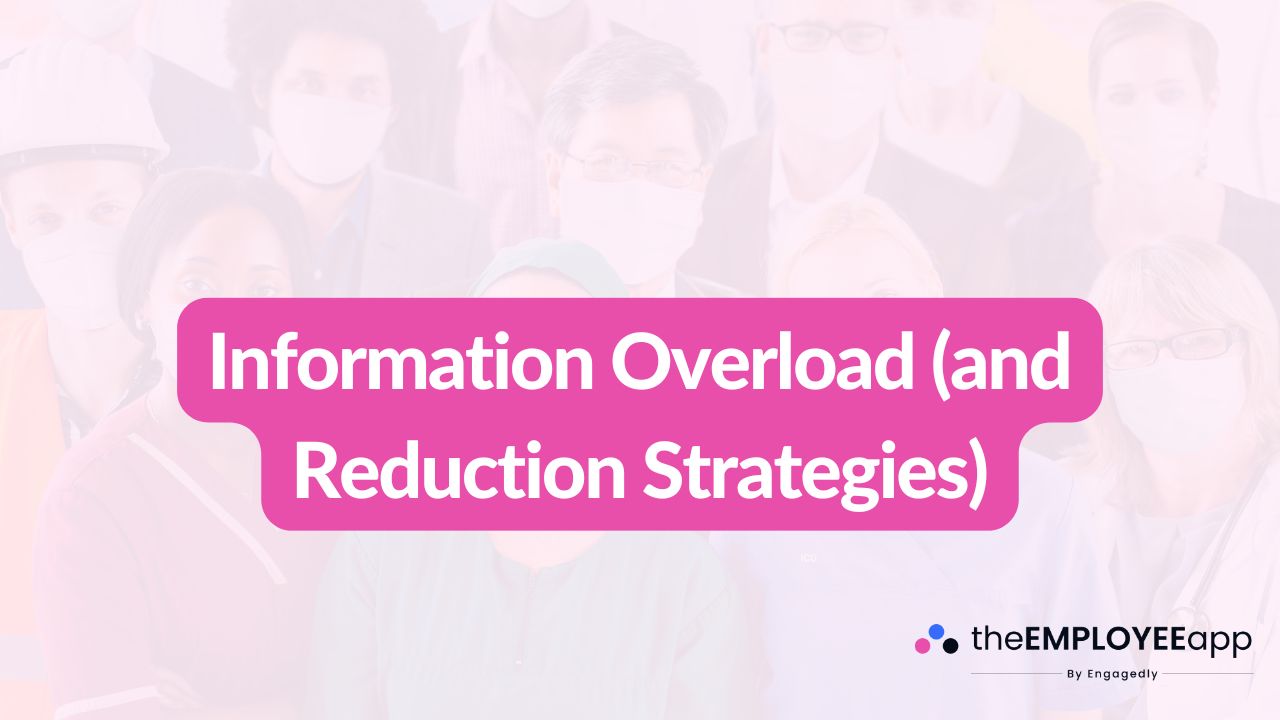
Information Overload (and Reduction Strategies)
Information overload occurs when individuals are presented with more information than they can reasonably process, leading to confusion, stress, and reduced productivity. In the workplace, information overload has become a growing challenge due to the sheer number of communication tools, channels, and content streams employees must navigate daily. From constant emails and chat notifications to digital updates and meeting requests, employees are often left feeling overwhelmed, which can harm decision-making, focus, and overall well-being.
What Causes Information Overload in the Workplace
Several factors contribute to information overload, especially in modern work environments:
Excessive communication channels: With emails, messaging apps, and intranets all competing for attention, employees struggle to keep up.
Unfiltered updates: When every announcement is shared with all employees, even when not relevant, it dilutes the importance of truly critical messages.
High volume of meetings: Meetings without clear agendas or outcomes add to the sense of overload.
Lack of prioritization: Without clear guidelines on what is urgent versus what can wait, employees spend time sifting through low-value messages.
Remote and hybrid work models: Distributed teams often rely on digital communication more heavily, which amplifies the flow of information.
The Impact of Information Overload
Unchecked information overload affects both individuals and organizations. Employees may experience fatigue, decreased job satisfaction, and a sense of burnout. Productivity declines as workers spend more time sorting through messages rather than completing meaningful tasks. Decision-making also suffers, as employees may miss key details in the noise or feel pressured to make rushed choices. For organizations, the cost of information overload can include slower execution, reduced employee engagement, and lower overall effectiveness.
Reduction Strategies for Information Overload
Organizations can adopt a range of strategies to combat information overload and create a more focused communication environment:
Content targeting: Share messages only with the specific groups or teams they apply to, instead of broadcasting everything to everyone.
Message prioritization: Clearly label urgent or time-sensitive updates so employees know what requires immediate attention.
Consolidation of tools: Reduce the number of platforms employees must check by integrating communication into a single, accessible system.
Structured communication policies: Establish guidelines for when to use email, chat, or in-app announcements to avoid duplication.
Limit non-essential updates: Encourage leaders and managers to share only information that is relevant and actionable.
Regular communication audits: Review the types of messages being sent and streamline processes to eliminate unnecessary noise.
Employee training: Teach employees how to manage notifications, organize digital workflows, and set healthy boundaries around communication.
The Role of Technology in Reducing Information Overload
Modern workplace technology, especially mobile-first communication platforms, can help reduce overload by prioritizing and personalizing information delivery. Features like content scheduling, push notifications, and geotargeting ensure employees receive timely, relevant updates without being overwhelmed by irrelevant details. By using data-driven tools, organizations can also monitor engagement levels and adjust communication strategies accordingly.
Benefits of Reducing Information Overload
When organizations address information overload, they unlock significant benefits:
Improved productivity: Employees spend more time focused on meaningful work instead of sorting through irrelevant updates.
Higher engagement: Clear and concise messaging helps employees feel more connected and less frustrated.
Better decision-making: With the right information delivered at the right time, employees make more informed choices.
Stronger culture of communication: A streamlined approach builds trust and respect for employees’ time and attention.
Reduced burnout: Employees feel less overwhelmed and more capable of managing their workload.
Examples of Effective Information Reduction in Action
A company sends urgent safety alerts only to employees in the affected region, rather than notifying the entire organization.
Managers receive weekly summaries of team performance instead of dozens of daily updates.
Leadership delivers key announcements through a dedicated internal app, ensuring employees don’t have to search across multiple platforms.
Conclusion
Information overload is one of the most pressing communication challenges facing today’s workforce. While technology has made it easier to share information, without thoughtful strategies, it can overwhelm rather than empower employees. By focusing on targeted communication, prioritizing messages, and consolidating channels, organizations can reduce overload and create a healthier, more productive work environment. Ultimately, managing information overload is about respect—respecting employees’ time, attention, and capacity to engage with the messages that matter most.
